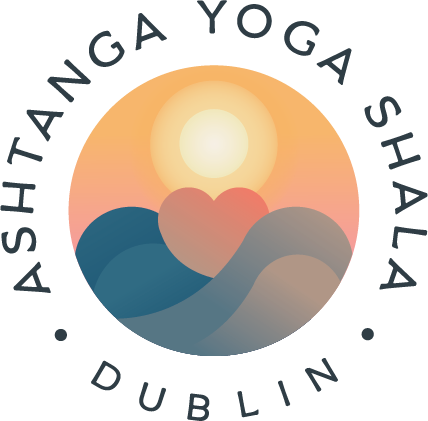Are yoga postures a form of meditation?
Many great teachers have said that the practice of yoga postures (asanas) is solely intended to give the practitioner the flexibility and stability to sit comfortably for a very long time, in order to practice meditation. Others would say that the asanas themselves are the meditation and that we don't need to add a separate sitting meditation practice; that yoga asanas can spontaneously induce a meditative state if they're practised in the correct way.
I'd like to tease out the second argument here a little for a couple of reasons.
Firstly, there is no formal sitting meditation practice as part of the ashtanga yoga tradition. In fact, Pattabhi Jois famously laughed when he was asked by his students if they should learn how to meditate. Instead of meditation, he called it 'mad attention' and said that meditation is not something that we can 'do', but rather it is a state of consciousness that happens spontaneously.
Secondly, many people (due to personality type, time restraints, or a myriad of other reasons) might dedicate themselves to asana practice in a way that they never would or could to a sitting practice, so there are a lot of people out there who will never practice meditation separately from yoga asanas.
That means that we should reflect on how to approach asana practice if we are using it as our sole means to achieve the state of meditation (Dhyana)*.
First off, it almost goes without saying (but not quite) that the internal aspects of ashtanga yoga practice (namely breath, bandhas, and drishti) are hugely important in helping us to enter more mindful states of consciousness. The physical postures themselves do, of course, have an effect on the mental state but the internal aspects connect us on a deeper level with our own minds. I've written about this before (probably a good few times) so I'm not going to expand on that thought here.
What I do want to mention is the one thing that I notice almost every ashtanga yoga practitioner doing, to varying degrees, during the asana practice that definitely prevents them from approaching that meditative state of Dhyana.
Wait for it...
It's very profound....
It is.....
Messing around, fiddling about, and dawdling in between one posture and the next.
Seriously!
It's so simple that it's almost silly and yet it's actually very, very difficult to stop doing it.
Think about it. You come up, nava inhale, from the first sun salutation (surya namaskara) and you pull the bottom of your top down. After the second surya namaskara you pull your waistband up. After the third one, you fix your hair and after the fourth, you wipe a drip of sweat from your nose. As the practice goes on, for an hour or more, we fiddle around, fooster about, and generally distract ourselves from what we are trying to achieve; single-pointed focus (ekagrata) on what we are doing.
But what we have to realise is this: We do not have time for that! We need to immediately flow from one vinyasa to the next without any break in the continuity of our awareness.
We don't have time to wipe our sweat, we don't have time to fix our hair, we don't have time to remove an item of clothing, we don't even have time to pet the dog! Because, if we're focused on doing any of those things, we're not focused on the practice that we've actually decided to dedicate our time to.
So let the sweat roll, let the hair get messy, finish in the same number of layers of clothing that you started in. Basically, focus on the vinyasas, focus on the breath, focus on the drishti (please, please focus on the drishti!) and focus on the sensations in the body and mind that are caused by doing yoga asanas. Everything else is a distraction, and distraction means that you can't possibly enter the Dhyana state.
Use your practice as a tool to cultivate focus. Focus is a super-power, especially in the age of smartphones!
Then, when we occasionally string enough moments of concentration (Dharana) together we can enter the state of Dhyana and, as many a teacher has said for many years, the yoga asana practice can become a moving meditation.
Maybe give the dog or the cat a little caress occasionally though, they need our love!
*Dhyana, the seventh limb of ashtanga yoga (as described by Patanjali in the Yoga Sutras) is usually translated as meditation. The eight limbs are Yama (five personal disciplines), Niyama (five social disciplines), Asana (postures), Pranayama (control of the breath), Pratyahara (withdrawal of the five senses), Dharana (concentration), Dhyana (meditation) and Samadhi (bliss, oneness).
